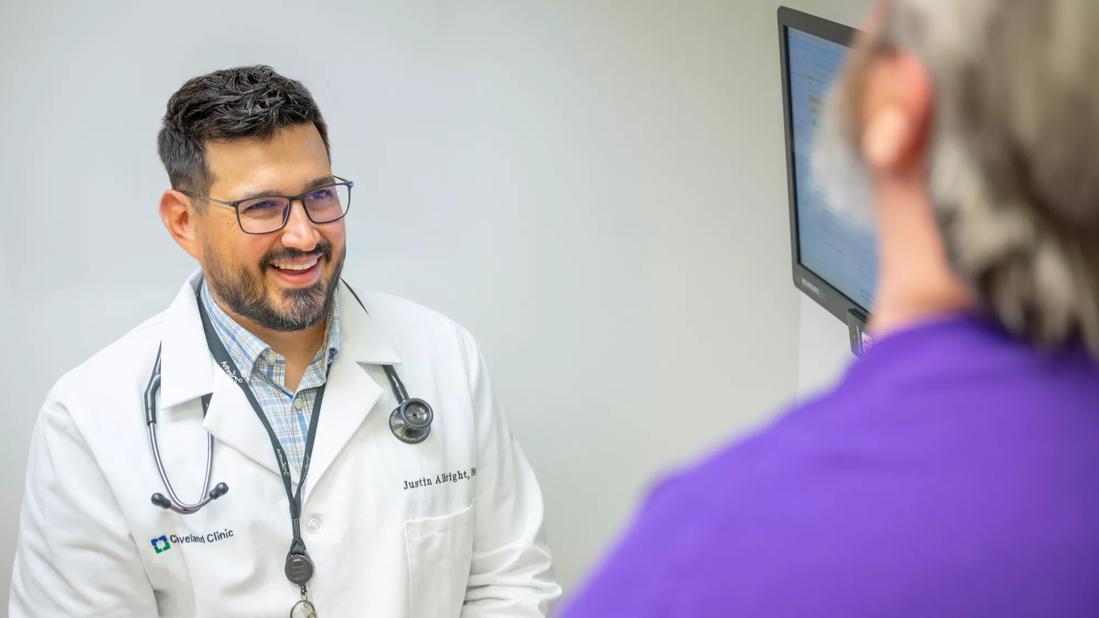Transition to Practice eases new hires into patient care

Cleveland Clinic employed more than 1,600 advanced practice registered nurses (APRNs) and physician assistants (PAs) in 2016. That’s nearly 500 more than it had just three years earlier.
Advertisement
Cleveland Clinic is a non-profit academic medical center. Advertising on our site helps support our mission. We do not endorse non-Cleveland Clinic products or services. Policy
Medical centers across the nation are witnessing a similar influx of advanced practice providers.
As the need for these providers explodes, so does the need for quality onboarding, says Anne Vanderbilt, MSN, CNS, CNP, Cleveland Clinic’s APRN Director.
“New-hire APRNs and PAs are already certified and credentialed to practice fully,” says Vanderbilt. “But a large majority of them — 65 percent of those at Cleveland Clinic — are new graduates. We want to support their transition from academia into practice and prepare them to thrive here long-term.”
Onboarding programs have varied across Cleveland Clinic’s institutes. Some APRNs/PAs had a coach for their first three months on the job. Others began working independently right away. Neither was wrong, notes Vanderbilt, but different APRNs and PAs were having different experiences throughout the system.
To ensure the highest quality of care and maximize productivity sooner, while still maintaining already-high staff retention rates, Vanderbilt and a team have begun rolling out systemized onboarding training for new-grad APRN/PAs.
No matter the Cleveland Clinic institute or department, all APRNs/PAs will follow a one-year Transition to Practice program. The first three months, “fellows” in primary care departments, for example, will spend four days a week alongside another provider. They may start off by seeing patients together and gradually transition to seeing patients independently and verifying findings with each other. The fifth day each week, APRNs/PAs will attend lectures, discuss case studies and have extra time to learn billing and documentation practices in a nonclinical setting.
Advertisement
“Our new-hire APRNs/PAs will not be autonomous right away,” says Vanderbilt. “That’s a big change for some institutes. Now everyone is front-loading their training.”
Transition to Practice is modeled after ACGME, ANCC and ARC-PA accreditation programming. New hires gradually increase autonomous practice after the first three months, but continue four to eight hours of nonclinical training per week. During their second six months, nonclinical training is reduced to eight hours or less per month.
Cleveland Clinic Wooster Family Health and Surgery Center was the first to use the Transition to Practice program in July 2017. The first cohort includes three APRNs in a primary care clinic. They’re using a customized McGraw-Hill SmartBook® interactive learning platform to master Cleveland Clinic care paths for 47 clinical conditions in nine specialty areas.
Additional cohorts throughout the health system will begin this fall, including a specialty track in general surgery followed by tracks in acute care and behavioral health.
Task forces, predominantly composed of experienced advanced practice providers, are designing curriculum and guiding implementation of the program. An oncology track is anticipated to launch in spring 2018.
“These structured, support processes are not APRN/PA training programs. They’re not a residency or fellowship,” says Vanderbilt. “They’re simply our way of streamlining onboarding experiences so that, ultimately, we have high reliability in our care, our productivity is up to speed as soon as possible, and our new hires become satisfied long-term employees.”
Advertisement
Advertisement

How hospitals can weave ethics into daily nursing practice to strengthen patient-centered care

Mobility carts provide exercises and tools

Nurse researchers explore the relationship between readmission risk scores and acute care transfers

Guiding nurses amid a constantly evolving healthcare landscape

Ideation session generates solutions to medication administration errors

Caregivers spearhead changes that improve patient care, shape hospital culture

Building a culture that supports, engages and empowers nursing staff

Nurses harness cutting-edge technology as a bridge to healing